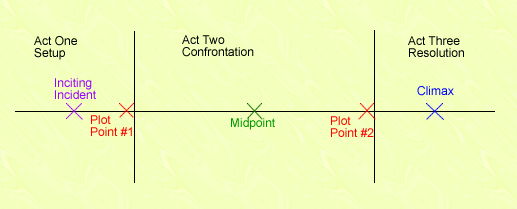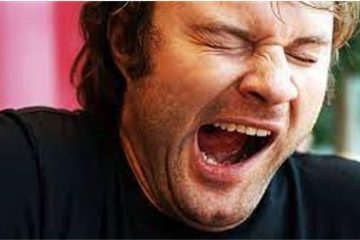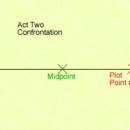
What is a Synopsis? The Classic Synopsis Structure – Syd Field’s Three Acts
What is a Synopsis?
A synopsis is a summary of a film’s plot, usually 4-6 pages long, that describes the entire storyline while focusing on the protagonist’s journey. It includes the major supporting characters, key relationships, and all the plot twists of the film including the beginning, middle and end.
Writing a full-length script versus writing a plot summary are two completely different skills.
My experience has taught me that someone who is good at one is not necessarily good at the other, and vice versa. Still, it is essential to know how to write a good plot synopsis since, as I will explain, it is a necessary step in scriptwriting for several reasons. The good news is that there are more established rules for writing a synopsis than for writing a full script, and in the worst case, you can ask or hire someone to do it for you. Since a synopsis is only a few pages long, it does not require a lot of work.
Contrary to what people think, a synopsis is not a one paragraph summary of the story (as you see in video store or DVD descriptions), but rather a complete outline of the screenplay’s (or film’s) plot at 4-6 pages long, font 14, single spaced.
Why is it essential to write a synopsis?
Because a good script requires good structure – the synopsis is like the script’s skeleton. As any contractor will tell you: “If the foundation is not good, nothing can help. You’ll end up with a crooked house.” The moment you write the synopsis you know the scope of your story, if you have enough events for a film, who your protagonists are, and what the major plot points are including the beginning and ending.
Because with a summary you can raise funding for script development – as I mentioned in a previous post, you can get funding for script development based on just the synopsis. Therefore it is very important that it is well written since it is competing against many other synopses in the pile. (I will elaborate on script submissions in another post).
What should a synopsis include? (And what should it not include)
The protagonists – it is best if the synopsis starts with your protagonist. You can also start with a paragraph describing the general world or situation in order to set the stage before introducing the protagonist, but you must understand that the one leading the story, script and ultimately the film itself is the protagonist. Therefore you need to “feel” your protagonist(s) even when written in summary form. The synopsis should mention the major characters in the film that advance the plot. If there is a lovely minor character that only appears for one scene, there is no need to mention them in the summary. This is not the place.
The plot developments – over the course of the script there are several events that change the course of the plot. For example, in a love story, the moment the protagonists first meet changes the plot (and initiates it), while a series of successful dates between them does not advance the plot but only fills it out. When the two protagonists encounter an obstacle and are forced to separate, the plot must change again. In this example, the synopsis should expand on the initial meeting and the obstacle, and summarize the dates in one sentence (even though in the script itself, the dates may take up many more pages).
In short, the synopsis is the story of the film including descriptions of the major plot points in the protagonist’s journey.
The ending and especially the beginning – in every story there is a point when an event occurs that triggers the entire story. If this event did not occur, the story would not exist. This event is called the “inciting incident” in screenwriting, and it needs to be interesting and strong enough to propel your story into the world. From there, there are several more plot points which I will detail below. It is also important to write the ending. A synopsis is not a sales pitch for the film, but rather something you, producers, the director and potential investors will read. In short, people who will also read the full script. Just as the ending appears in the full script, it should also appear in the synopsis.
The cinematic style of the world – although a synopsis summarizes the story and does not detail everything, in those few pages you still need to convey the magic of your script, what makes it unique. To accomplish this you must provide one or two examples within the plot descriptions, of a scene or two, the most original you can invent, in order to show the readers and script consultants who will read your synopsis the potential of your script.
In my next post you will find a sample synopsis: Getting Married – a romantic comedy I wrote and directed
Looking for the most comprehensive course on how to write a synopsis for a film or a pitch document for a TV series? Click here Want to consult with me? Feel free to contact me
The Classic Synopsis Structure – Syd Field’s Three Acts
Nowadays there is a lot of criticism about how relevant Syd Field’s three act structure is for screenwriting, since fundamentally, the acts related to playwriting (where it was important to have acts to allow for changing the set design every so often). However, the three act structure is still the most classic and standard when it comes to plot structure, and even alternative models refer to it. Therefore I will start with explaining it.
According to Syd Field’s model, the script structure consists of three acts as follows:
First Act (consisting of a quarter of the film) includes, in order:
Exposition: Introducing the protagonist and the circumstances in which he operates, and some say also his dilemma.
Inciting Incident: The moment this event occurs, the story begins to unfold, and it also includes the premise of the film (premise = what the story is essentially about)
Plot Point 1 – Transition to Second Act: Field himself did not necessarily detail what this point is, but others have interpreted (wisely in my opinion) that this is the point when the protagonist decides to do something regarding the inciting incident, and thus brings us into the second act.
Second Act (half of the film):
Obstacles – the protagonist encounters and overcomes obstacles
Midpoint – the halfway point of the film when the protagonist is furthest from his goal and must find a new alternative
Plot Point 2 – False victory: the protagonist almost achieves his goal and then everything falls apart (usually because the villain has deceived him)
Third Act (a quarter of the film):
Climax – where the protagonist deals with his central conflict and succeeds (or doesn’t, depends on the film)
Denouement – The moment after the resolution and return to normal when we see how the protagonist has changed.
According to Field’s mathematical logic, the synopsis should also be structured so that the first act is a quarter (one page), the second half (two pages) and the third again a quarter (one page).







